Ukadiche modak is a steamed rice flour dumpling with sweet coconut jaggery filling inside. These traditional sweets are made during Ganesh Chaturthi Festival in India. Sharing how to make this Ukdiche modak with and without mold.
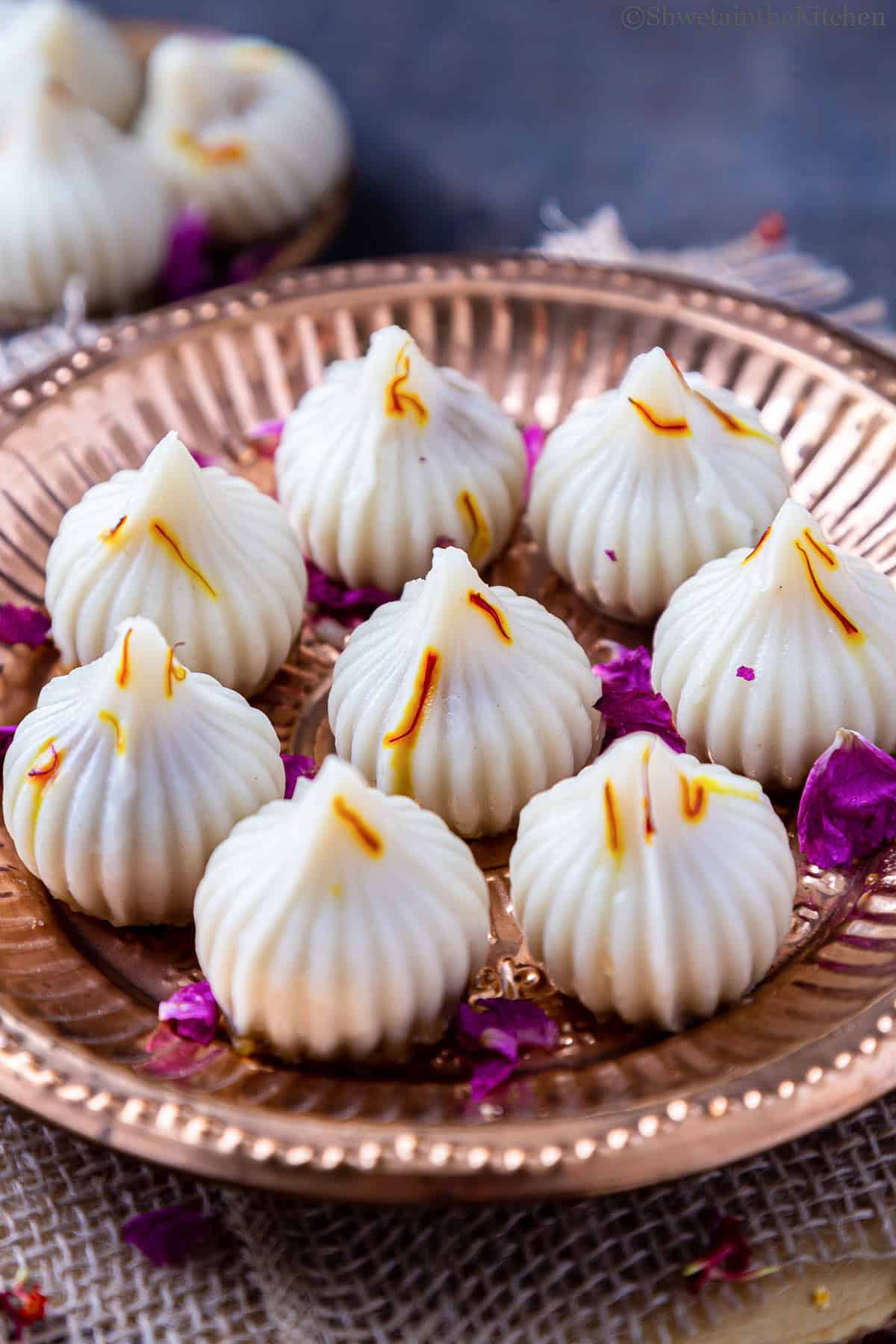
Ganesh Chaturthi celebrations are in a week and this festival is incomplete without Modak, Lord Ganesha's favorite food.
Aaji (grandmom) and mom make Ukadiche modak as prasad on the first day of Vinayak Chaturthi. That sweet aroma would fill the house and smell absolutely divine.
Visiting relatives and friends to worship Ganpati Bappa, eating a variety of modak, peda, and delicious Maharashtrian food is what sums up this festival for me.
I miss the festive feels and experience but I definitely make up with some modak and yummy food on this auspicious occasion!!
Here are some other modak recipes to try this festive season Fried Modak, Chocolate Modak, and Kesar Modak.
Jump to:
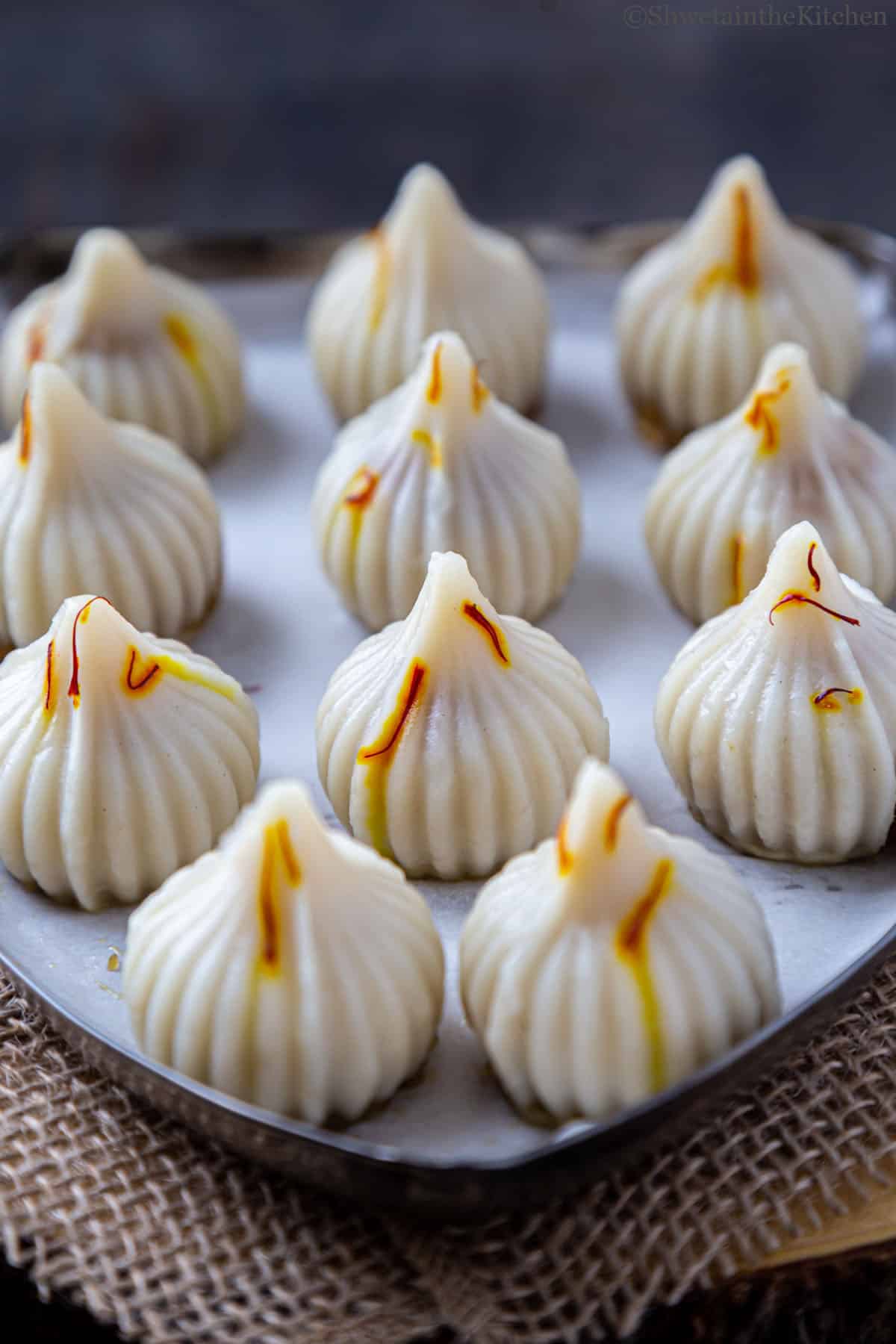
What is Modak
Modak is a popular Maharashtrian sweet made during the 10-day Ganesh Chaturthi Festival as an offering to Lord Ganesha and is considered to be his favorite food.
There are two types of Modak, fried and steamed kind. Fried ones are also known as talniche modak and steamed modak as Ukadiche modak in the Marathi language.
In both varieties, they are stuffed with a sweet filling made of coconut, jaggery, and cardamom.
Steamed modak is made with a covering of rice flour while fried ones with wheat or all-purpose flour.
In this post, I'm sharing the Ukdiche modak recipe. You can also try the fried modak recipe.
Steamed modak is
- Lord Ganesha's favorite food
- extremely delicious
- made with rice flour
- soft and doughy on the outside
- sweet and coconutty on the inside
Ukadiche Modak is a steamed (sweet) dumpling where ukadiche means "steamed" or "that is steamed" and modak is the name for dumpling of this patented shape.
Steamed modak is made with a covering of steamed rice flour, also known as Ukad) and stuffed with a sweet filling made of coconut, jaggery, and cardamom.
Making modak can be a bit intimidating considering it needs practice. But not anymore!! Here is a detailed guide on how to make Ukadiche modak with all tips, tricks, and a video. Hope you find this helpful!
Recipe Ingredients
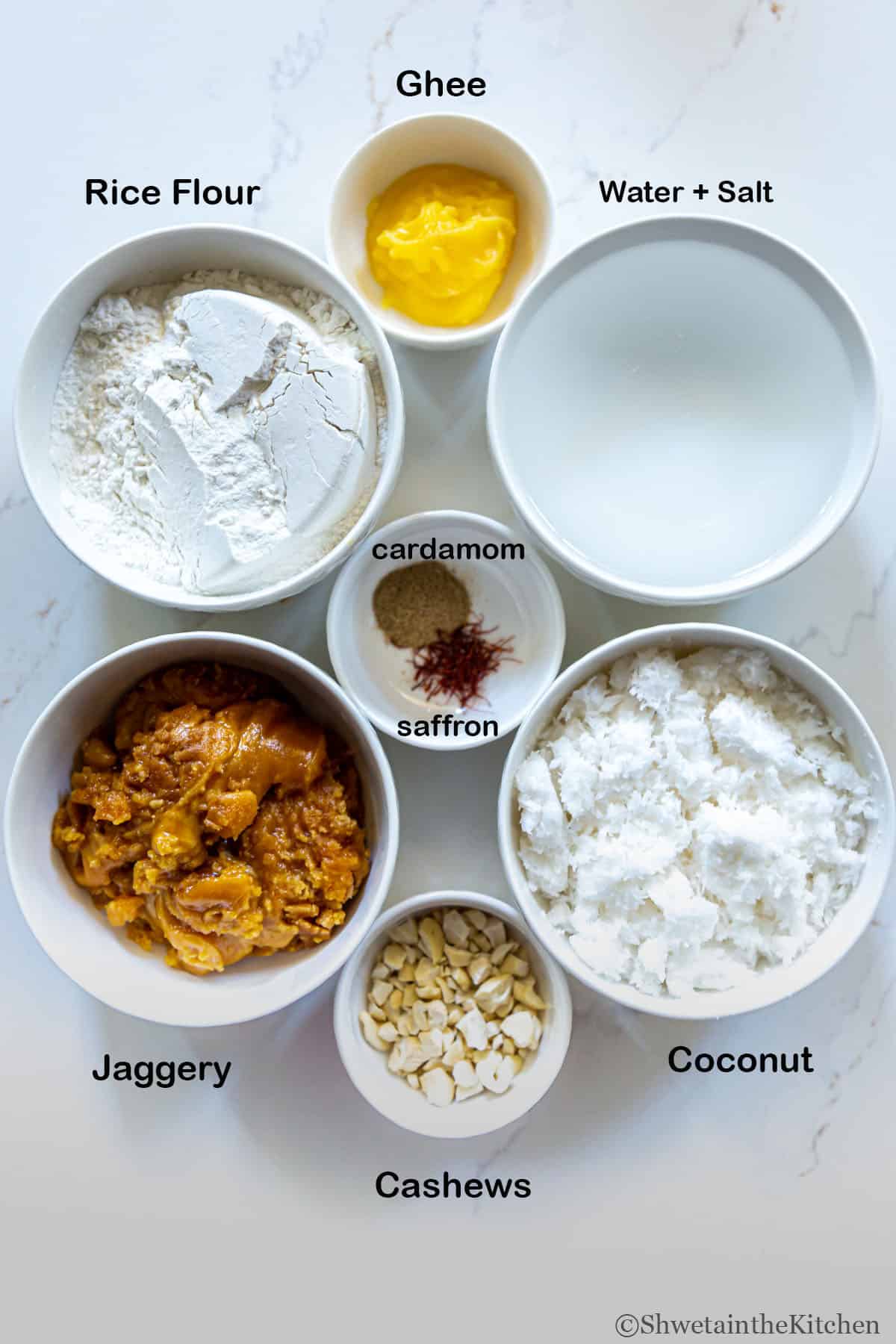
For the Coconut Jaggery Filling -
Coconut - Traditionally fresh coconut is used to make Ukdiche modak but frozen, or desiccated coconut can be used too. I've used frozen coconut that I've thawed to room temperature before cooking.
Jaggery - Use grated jaggery for this recipe as it makes it easier and quicker to melt and mix. Jaggery gives an authentic taste but you can also replace it with sugar.
Flavoring - You will also need some cardamom powder and saffron (optional) for flavor
Nuts - These are optional but I like adding some chopped cashews to the filling.
For the Outer Covering -
Rice flour - Use the fine variety of rice flour. Ensure it's fresh with no lingering old smell to it. You can also sift the rice flour.
In addition, we will also need salt, ghee, and water.
Step by Step Instructions
To make the coconut jaggery filling
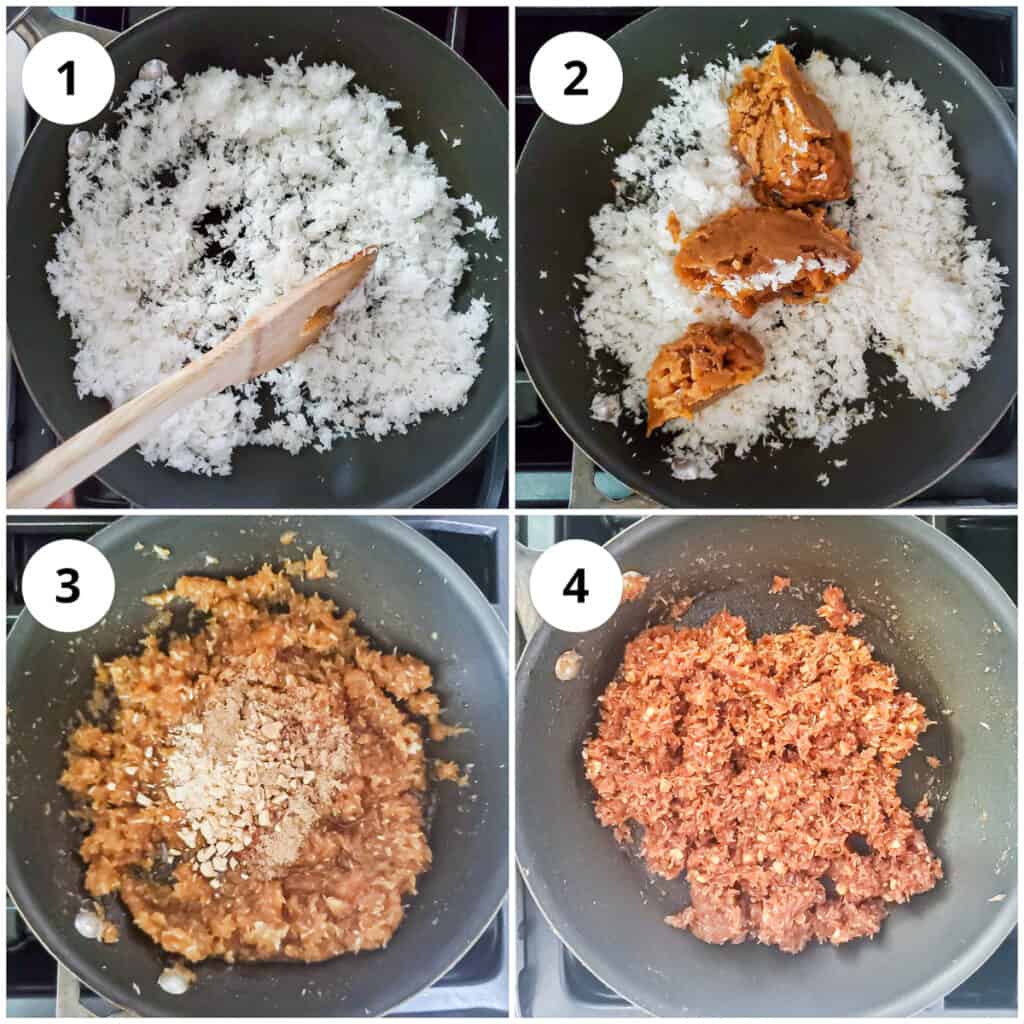
1 - Heat a pan on medium heat and dry roast the coconut for 5 mins to dry out the moisture if any. I've used frozen, thawed coconut. Fresh coconut can be used too.
2 and 3 - Add the grated jaggery, mix till it's melted and well combined. Stir in the cardamom powder, saffron, and cashew pieces.
4 - Keep stirring continuously (approximately 2 mins) until the mixture is almost dry. Turn off the heat and keep it aside to cool slightly. Don't overcook the jaggery coconut filling else it will turn hard.
While the coconut jaggery mixture (also known as saran) cools, let's make the outer covering.
To make the outer covering
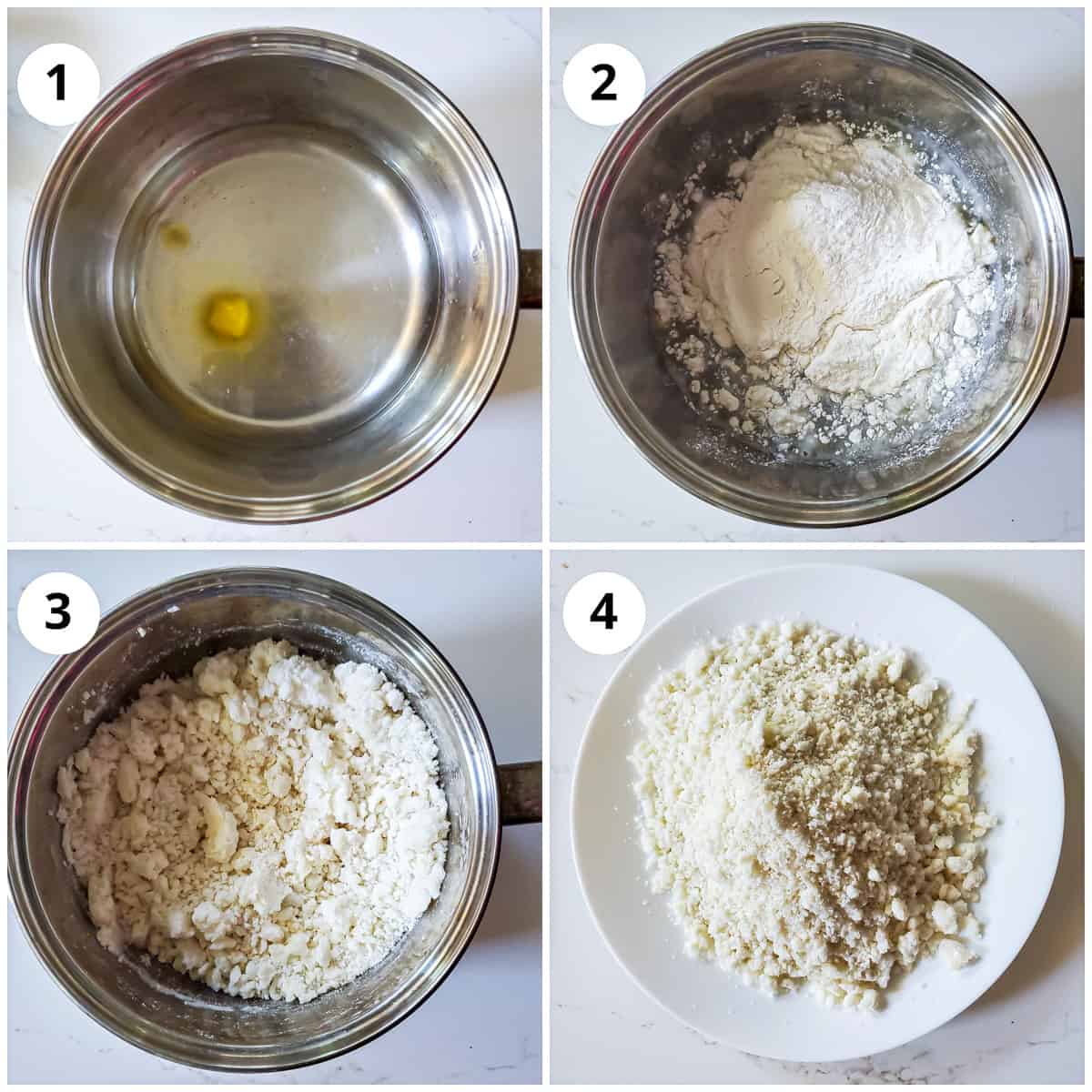
1 - In a pot or saucepan, water, add salt and 1 teaspoon of ghee. Bring it to a boil.
2 - Stir in the rice flour and mix well using a spoon or spatula.
3. - The mixture should be soft, lumpy, and crumbly. Turn off the heat. Cover the pot and let this mixture sit for 5 mins.
4 - Transfer the rice flour mixture to a plate and allow it to cool a bit enough to handle but still warm.
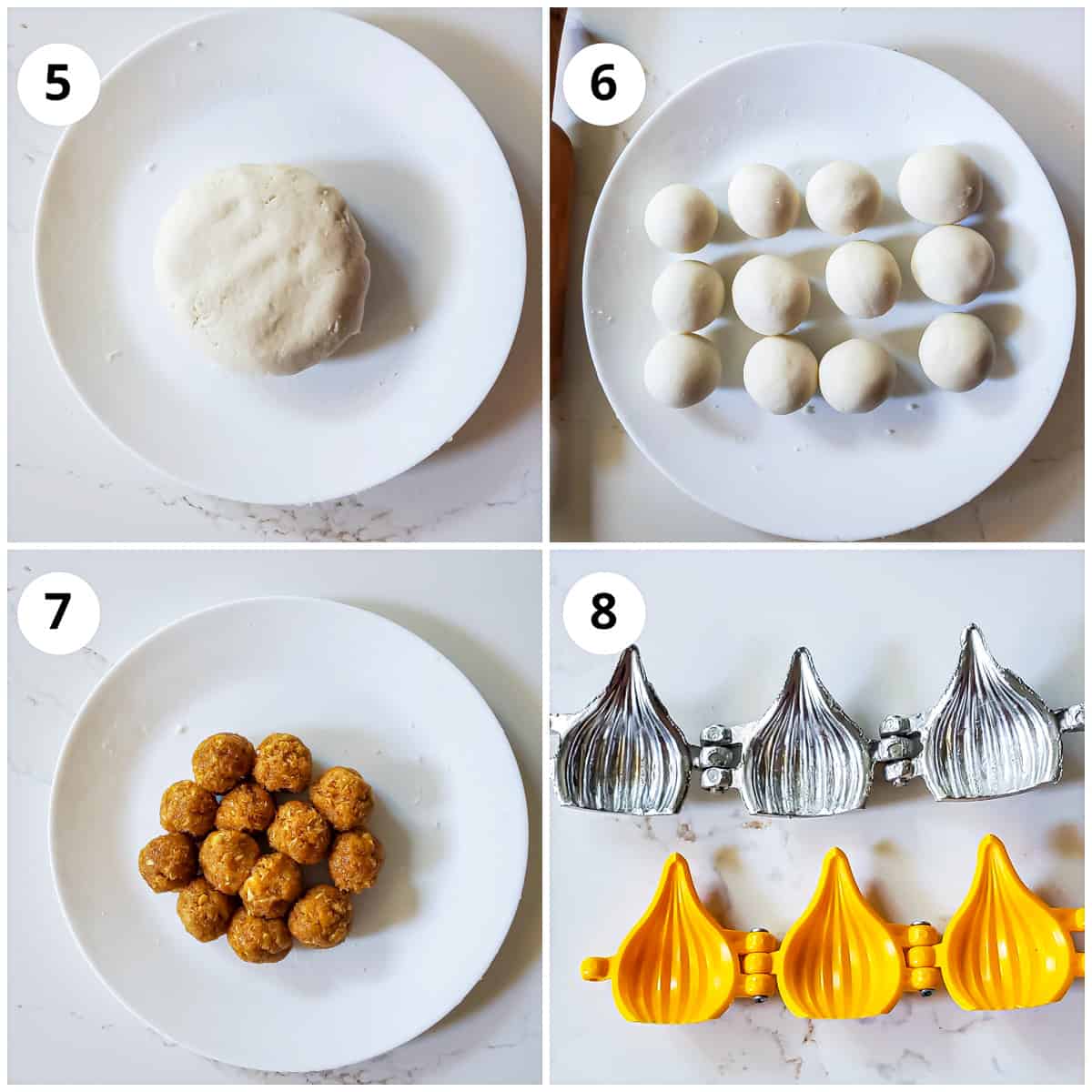
5 - Knead the dough for 5 mins using 1-2 tablespoon water (or as needed) and 1-2 teaspoon ghee into a smooth, soft dough. It shouldn’t be cracked or crumbly. Keep covered at all times with a wet cloth to prevent it from drying.
6 to 7 - Divide dough and filling equal portions.
8 - You can either make modak freehand or using molds. There are two types of mold available aluminum ones and plastic. I have used the aluminum one for this Ukadiche modak recipe.
To make modak using a mold
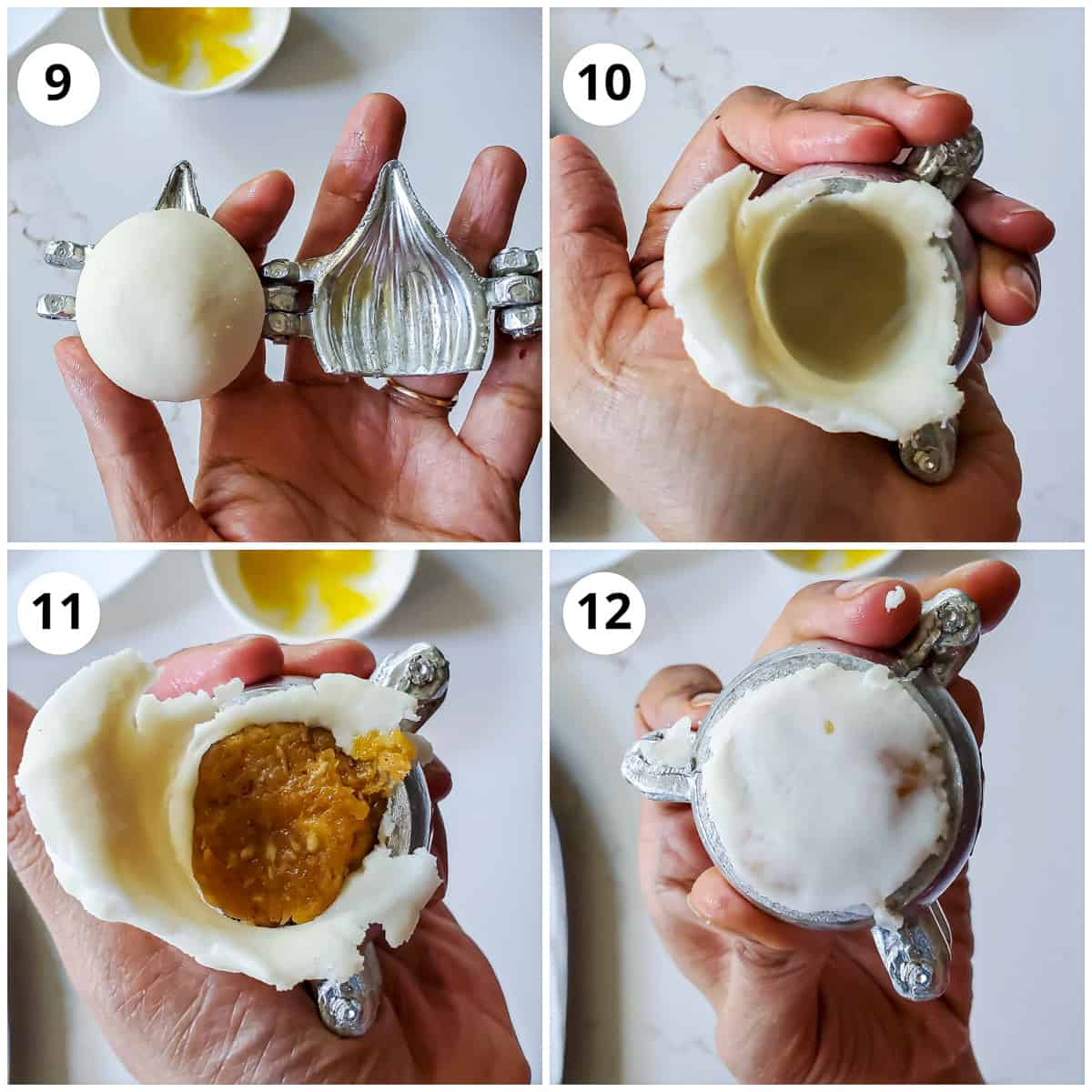
9 - Grease your plate or steamer basket. Open the mold and apply ghee to the inside of the mold. Place one dough ball and close the mold.
10 - From the open side, start pressing and spreading the dough using fingers as thin as possibly can but not too thin. The excess dough will come out of the mold, either cut it or leave it there. It can be used to close the modak.
11 - Place a portion of the coconut jaggery filling in the hollow.
12 - Fold over the excess covering to close the modak. Remove any excess dough that you see on the joints of the mold.
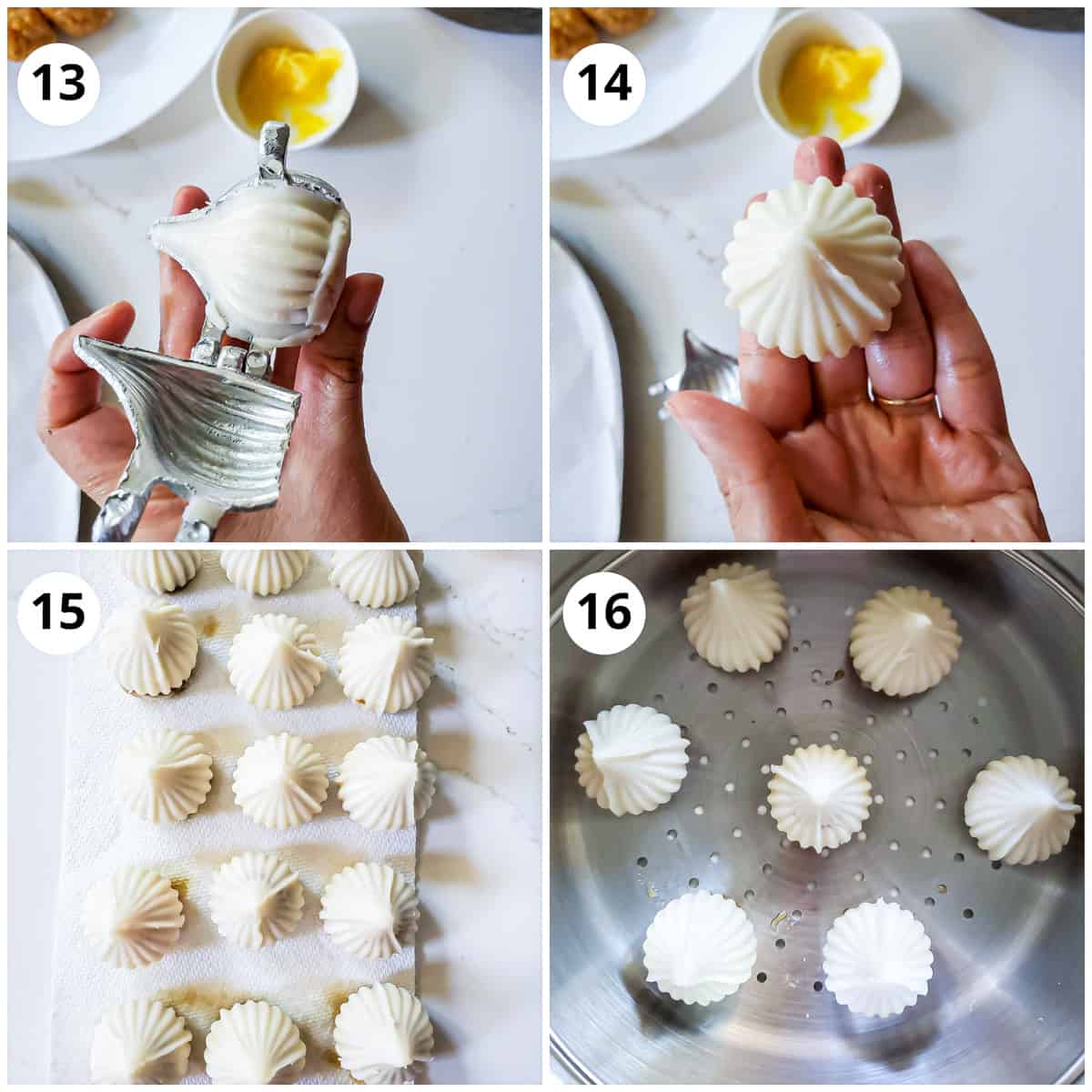
13 to 16 - Open the mold and take the modak out gently. Place it on a greased steamer basket. Add 1-2 threads of saffron on top of each modak (optional step)
Continue making the remaining modak in a similar manner. Ensure to grease your mold before making the next modak.
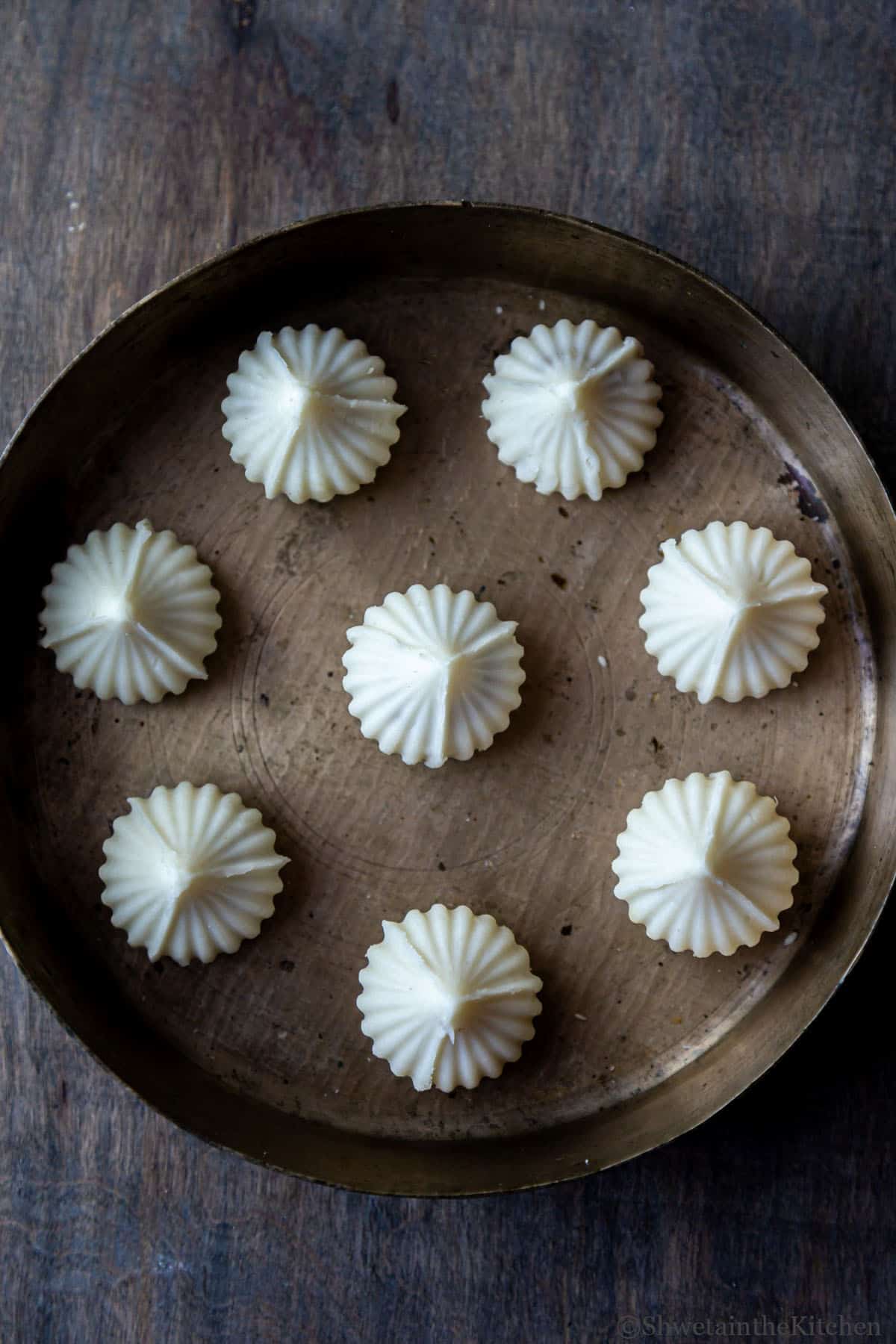
To make modak free hand
Take one ball and starting in the center start flattening and spreading it in disc or bowl as thin as you can without breaking it.
Place the filling in it and then make pleats. Bring all edges together and then join them. Remove the extra covering and shape the top to a point (peak).
Place in the greased steamer basket. Check out the video to see how to make modak without mold.
Steaming modak
You can steam the modak in a pressure cooker or in an Instant pot or on the stovetop.
Steam in multiple batches depending on how many modak the steamer basket can hold. Do not overcrowd. I did 7-8 at a time.
To steam, Add 2 cups of water to the pot and bring it to a boil. Place the steamer basket with modak inside. Close and cook covered for 10-12 mins.
Turn off the heat, allow to cool for 5 mins in the pot itself. Take the basket out and cool for another 5 mins. Then transfer to a plate. Drizzle with some ghee and enjoy!!.
Please see the recipe card below for detailed instructions on steaming using a pressure cooker, Instant pot, or on the stovetop.
Ukadiche Modak is ready!! Drizzle some ghee and serve warm!!
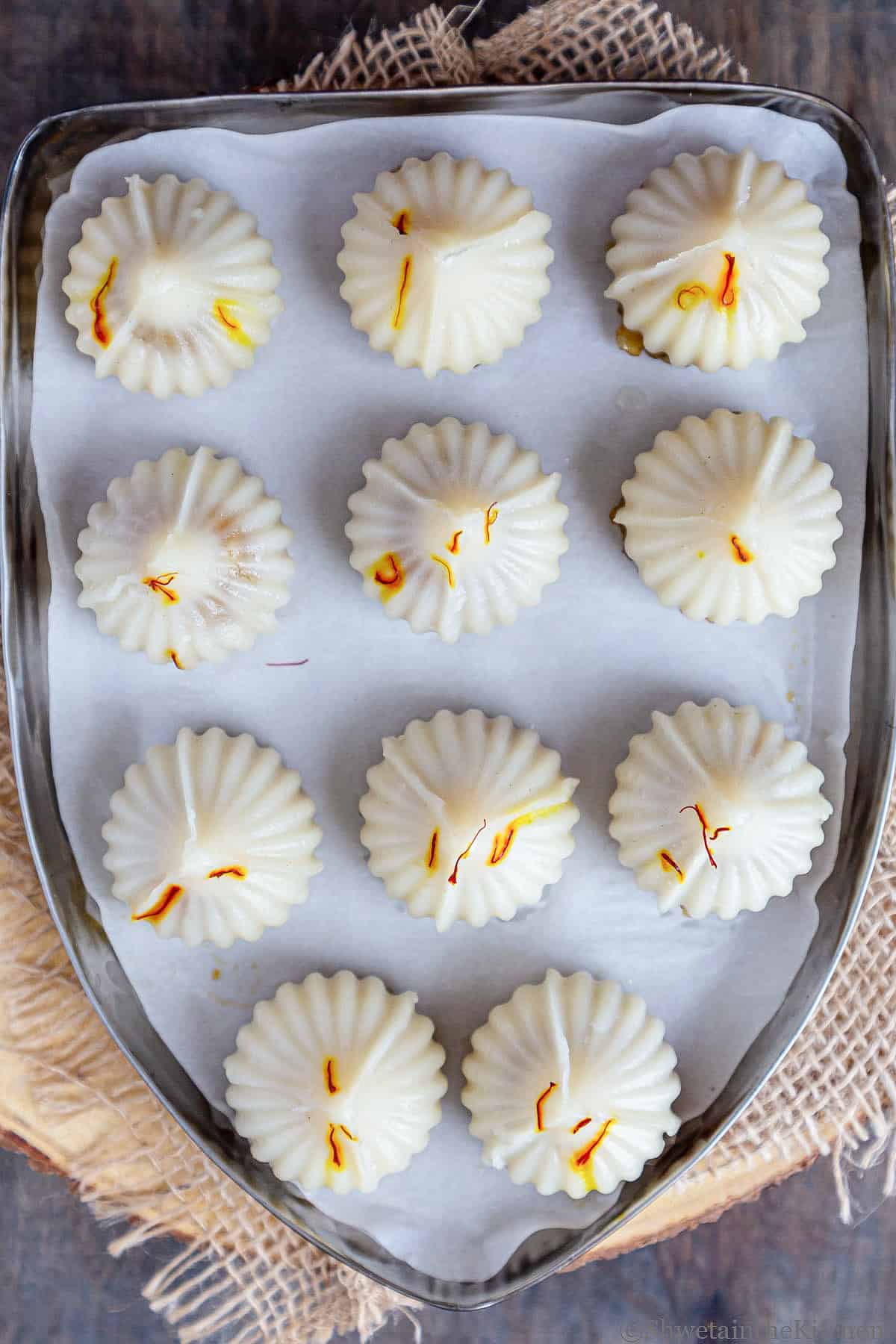
Recipe Tips for Perfect Modak
For the rice flour dough
- Knead the dough well (the most important step) with a couple of tablespoons of water and ghee to make it soft and smooth.
- Cracked dough is an indication of less water.
- Dry dough will make shaping difficult and usually, modak turns out dense and chewy after steaming.
- Keep the dough covered with a moist paper towel at all times to prevent it from drying.
- For shaping modak freehand, flatten the dough just enough that it doesn't tear.
- I prefer my outer layer to be thin but you can adjust it to your liking.
- Thick covering takes more time to cook and doesn't taste well.
For the sweet coconut filling
- Fresh, frozen, or desiccated coconut can be used for filling.
- If using desiccated coconut add 1-2 tablespoons of water to bring in the moisture.
- Don't overcook the jaggery coconut filling else it will turn hard. If it does, just add a couple of tablespoons of water reheat until soft.
- Depending on the color of jaggery, the color of the saran (filling) will vary. Dark jaggery will result in dark saran.
- Adding some nuts to the filling is optional but highly recommend as it adds to the crunch.
For the modaks
- Use modak molds, they make the shaping process really easy compared to freehand.
- Grease your molds to avoid the flour from sticking to molds and breaking.
- Mom's tip: dip the modak in water prior to steaming for those soft melt in mouth modak.
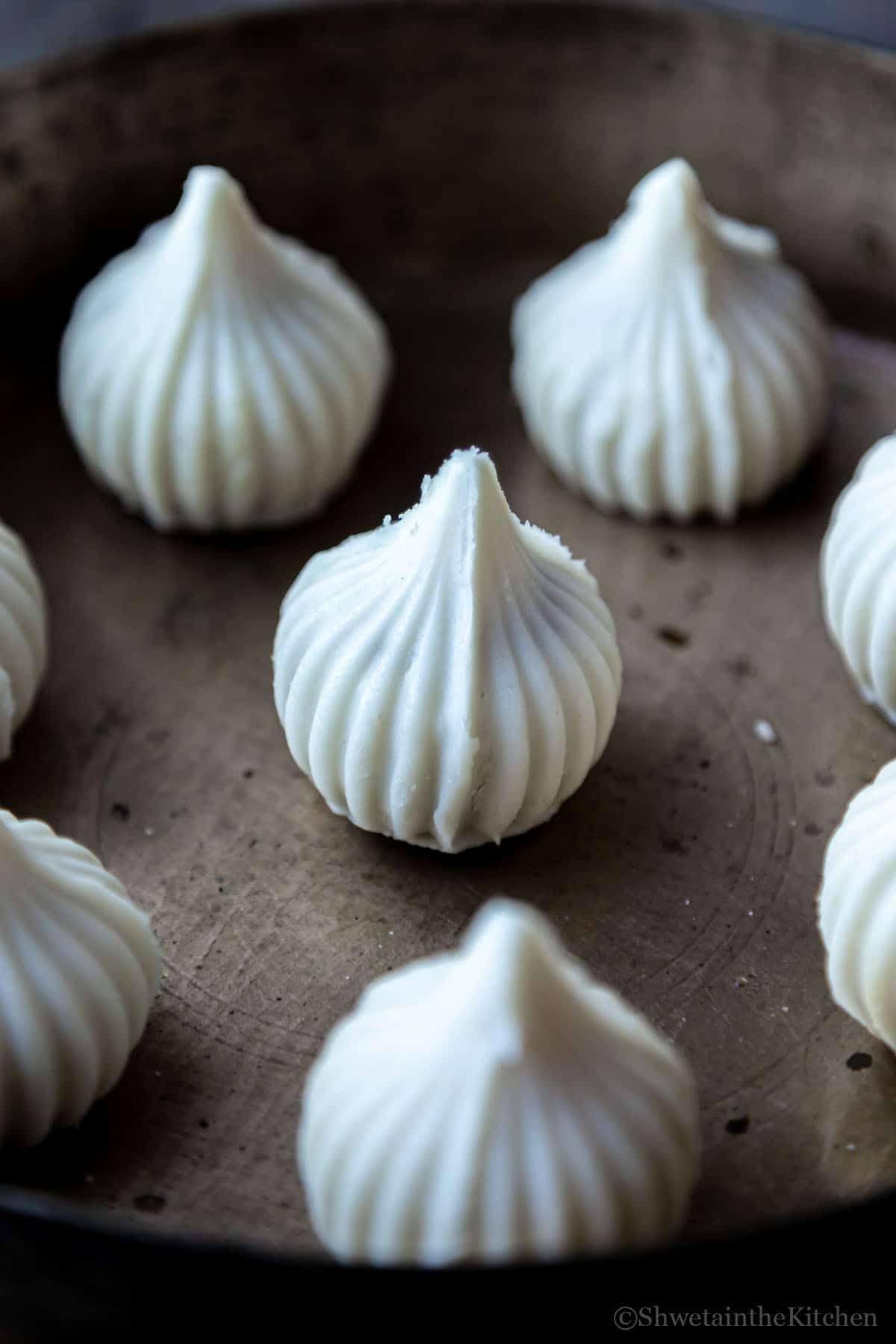
Frequently asked questions
Modak can be stored covered at room temperature for a day and refrigerated for up to 2-3 days. To reheat, steam for 2-3 mins (best results) or microwave for a few seconds (may turn chewy).
Yes, the filling can be made using desiccated coconut. Just add a tablespoon or two of water to bring in some moisture. Cooking time and taste may vary slightly.
Overcooking the filling will make it hard. Cook it just till the mixture is dry with still a little moisture left to prevent it from turning hard.
Recipes for Ganesh Chaturthi
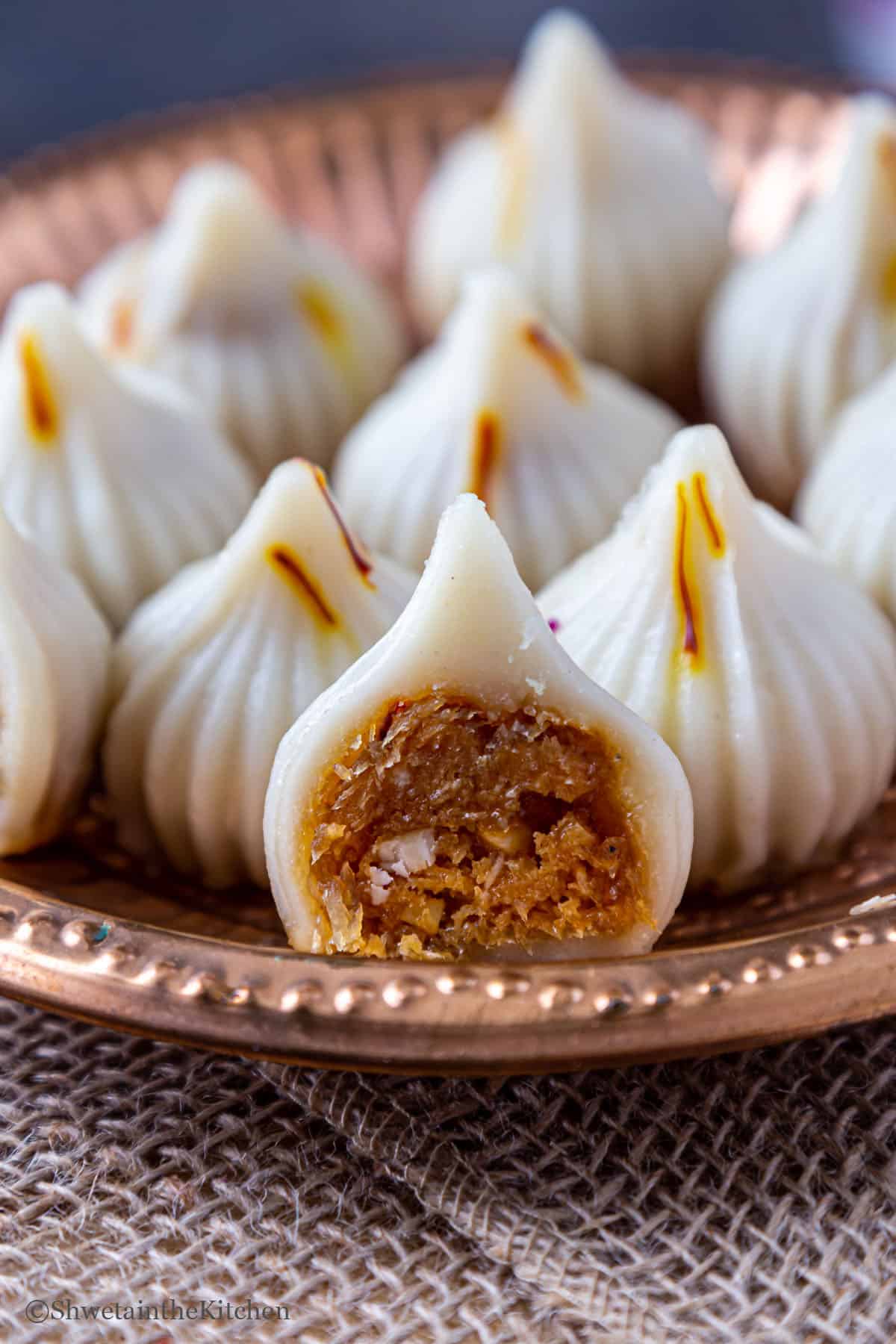
Hope you enjoy this Ukadiche Modak Recipe!! If you give this recipe a try, please rate by clicking stars ⭐️ in the recipe card. Thank you ❤️! You can also follow me on Facebook | Instagram to see what’s cooking in my kitchen.
Recipe Card
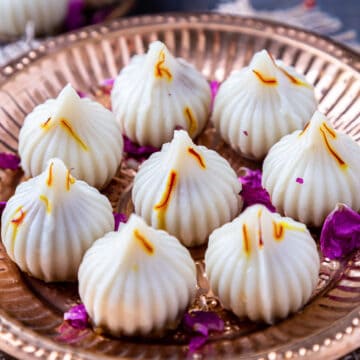
Ukadiche Modak
Equipment
Ingredients
For the filling
- 1 cup grated coconut am using frozen, fresh or desiccated can be used too.
- ½ cup grated jaggery
- ½ teaspoon cardamom powder
- pinch saffron optional
- 10-12 cashews coarsely chopped, optional
Instructions
To make coconut jaggery filling:
- Heat a pan on medium heat and dry roast the coconut for 5 mins to dry out the moisture if any. I've used frozen, thawed coconut. Fresh coconut can be used too.
- Add the grated jaggery, mix till it's melted and well combined. Stir in the cardamom powder, saffron, and cashew pieces (optional).
- Keep stirring continuously (approximately 2 mins) until the mixture is almost dry. Turn off the heat and keep it aside to cool slightly. Don't overcook the jaggery coconut filling else it will turn hard.
- While the coconut jaggery mixture (also known as saran) cools, let's make the outer covering.
To make the outer covering:
- In a pot or saucepan, water, add salt and 1 teaspoon of ghee. Bring it to a boil.
- Stir in the rice flour and mix well using a spoon or spatula. The mixture should be soft, lumpy, and crumbly. Turn off the heat. Cover the pot and let this mixture sit for 5 mins.
- Transfer the rice flour mixture to a plate and allow it to cool a bit enough to handle but still warm.
- Knead the dough for 5 mins using 1-2 tablespoon water (or as needed) and 1-2 teaspoon ghee into a smooth, soft dough. It shouldn’t be cracked or crumbly. Keep covered at all times with a wet cloth to prevent it from drying.
- Divide dough and filling equal portions.
- You can either make modak freehand or using molds. There are two types of mold available aluminum ones and plastic. I've used the aluminum mold.
To make modak using mold:
- Grease your plate or steamer basket.
- Open the molds and apply ghee to the inside of the mold. Place one dough ball and close the mold.
- From the open side, start pressing and spreading the dough using fingers as thin as possibly can but not too thin. The excess dough will come out of the mold, either cut it or leave it there. It can be used to close the modak.
- Place a portion of the filling in the hollow and use the excess covering to close the modak. Remove any excess dough that you see on the joints of the mold.
- Open the modak mold place them in the steamer basket.
- Slowly open the mold and remove the modak gently. Place it on a greased steamer basket.
- Optional Step : Add 1-2 threads of saffron on top of each modak (optional step)
- Continue making the remaining modak in a similar manner. Ensure to grease your mold before making the next modak.
To make modak freehand (without mold):
- Take one ball and starting in the center start flattening and spreading it in disc or bowl as thin as you can without breaking it.
- Place the filling in it and make pleats. Bring all edges together and then join them. Remove the extra covering and shape the top to a point (peak). Place in the greased steamer basket.
- You can steam the modak in a pressure cooker or in Instant pot or on the stovetop. Steam in multiple batches depending on how many modak the steamer basket can hold. Do not overcrowd. I did 7-8 at a time.
Steaming Ukadiche Modak in Instant Pot
- Add 2 cups of water to instant pot insert. Start saute mode and bring it to a boil. Place the steamer basket with modak on trivet. Cancel saute mode.
- Close instant pot lid with the vent in venting posting. Steam (press steam) modak for 10 mins. Start an external timer as the Instant pot timer won’t work.
- Allow the pin to drop naturally and open the lid after 5 mins. Allow to stay for 5 mins and then transfer to a plate.
Steaming Ukadiche Modak on the stove top
- Place 2 cups of water in the pot and bring it to a boil. Place the steamer basket with modak inside. Close and steam on medium heat covered for 10-12 mins.
- Turn off the heat, allow to cool for 5 mins in pot itself. Take the basket out and cool for another 5 mins. Then transfer to a plate.
Steaming Ukadiche Modak in a pressure cooker
- Add 2 cups of water to the pressure cooker. Bring it to a boil on medium high heat. Place the steamer basket with modak on the trivet.
- Close the pressure cooker lid without the weight. Steam modak for 10-15 mins. Start an external timer.
- Let the steam (whistle sound) go away naturally and open the lid after 5 mins. Allow to stay for 5 mins and then transfer to a plate.
- Delicious Ukadiche (steamed) Modak are ready!! Drizzle with some ghee and enjoy!!.
Video
Notes
- Use a fine variety of rice flour. Ensure it's fresh with no lingering old smell to it.
- Knead the dough well (the most important step) with a couple of tablespoons of water and ghee to make it soft and smooth.
- Cracked dough is an indication of less water. Dry dough will make shaping difficult and usually, modak turns out dense and chewy after steaming
- I prefer my outer layer to be thin but you can adjust it to your liking. Thick covering takes more time to cook and doesn't taste well.
- If using desiccated coconut add 1-2 tablespoons of water to bring in the moisture.
- Don't overcook the jaggery coconut filling else it will turn hard. If it does, just add a couple of tablespoons of water reheat until soft.
- Depending on the color of jaggery, the color of the saran (filling) will vary. Dark jaggery will result in dark saran.
- Take your time to assemble the modak. Rushing might cause to break them.
- Use modak molds, they make the shaping process really easy compared to freehand.
- My Mom's tip: dip the modak in water prior to steaming for that soft melt-in-mouth modak.


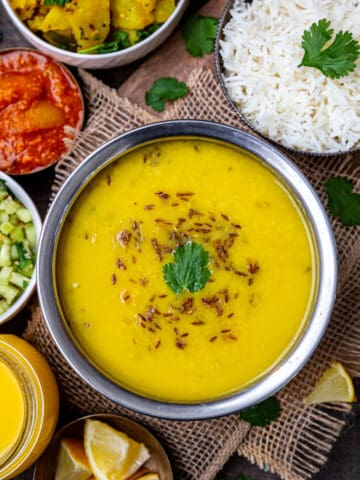
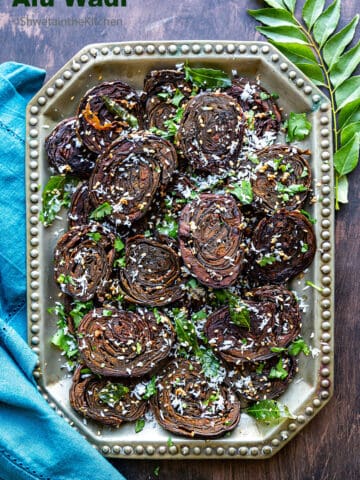
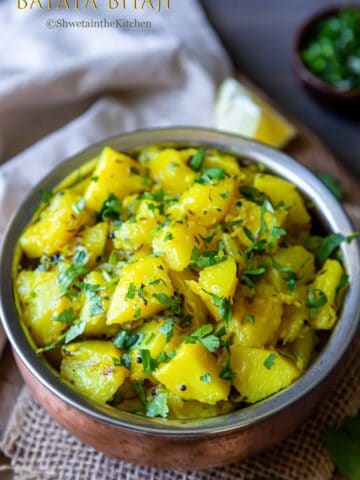
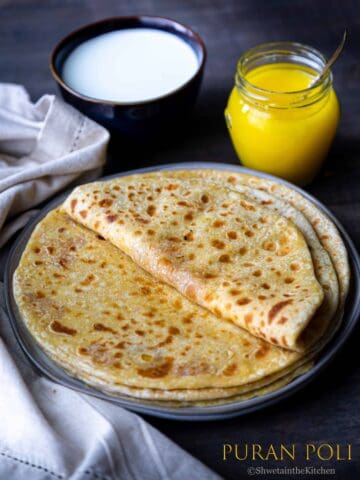

please let me know how many days can keep modak dough
The dough is best made fresh and used immediately.
Thanks for the recipe. Can I shape modals and steam just before serving or should these be steamed right away after filling and shaping?
yes, just make sure they remain moist and soft by covering with wet cloth otherwise they will dry out. My preference is to shape and steam them right away for best results.